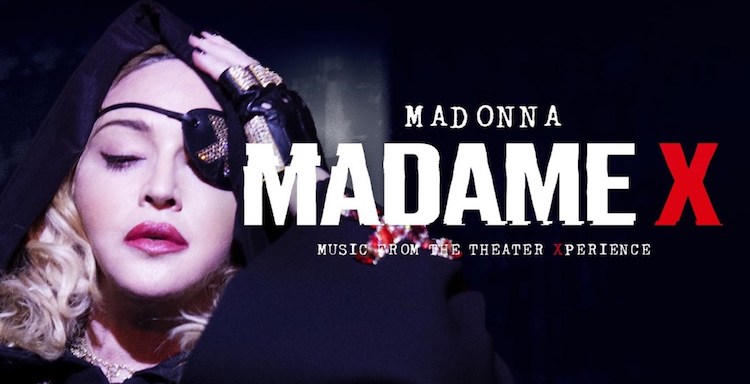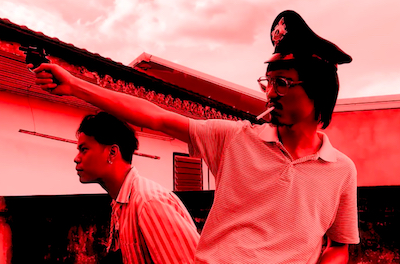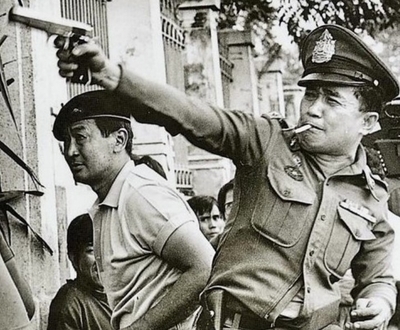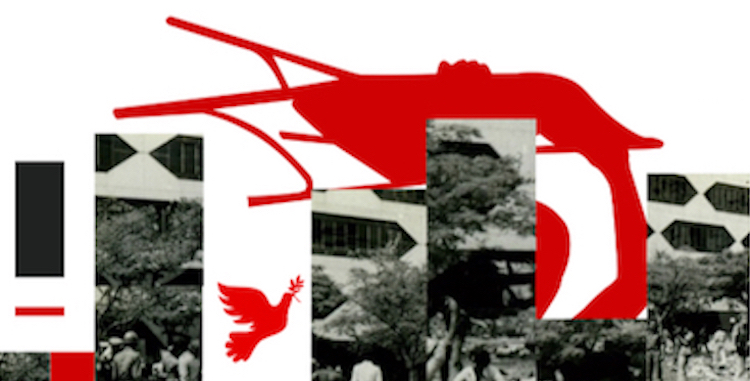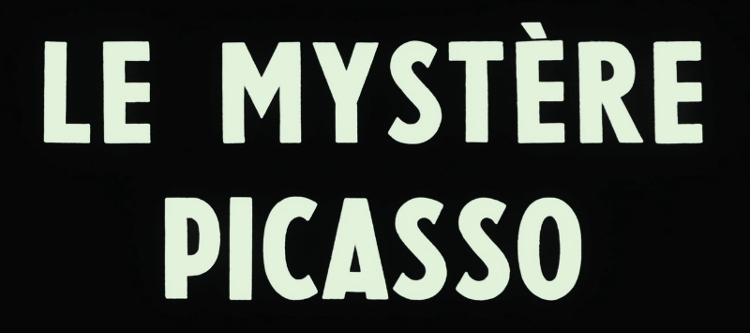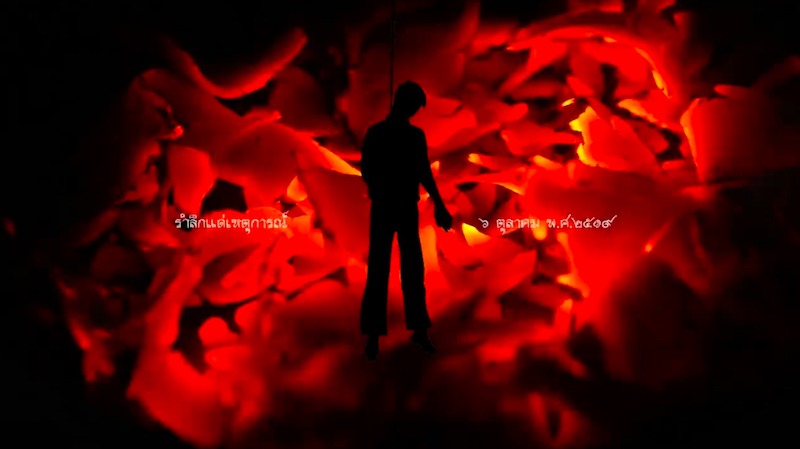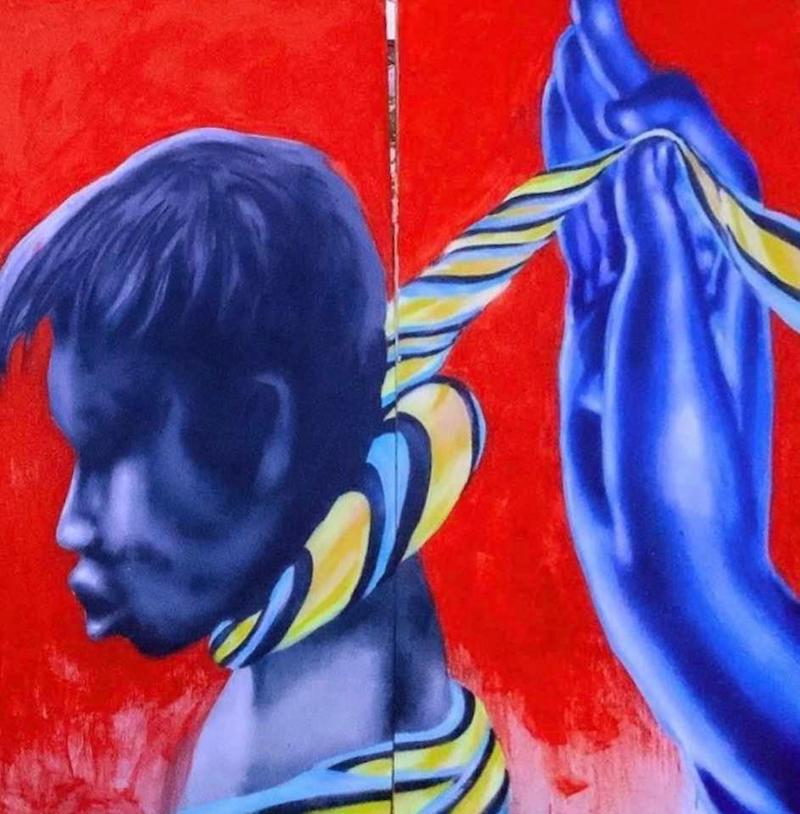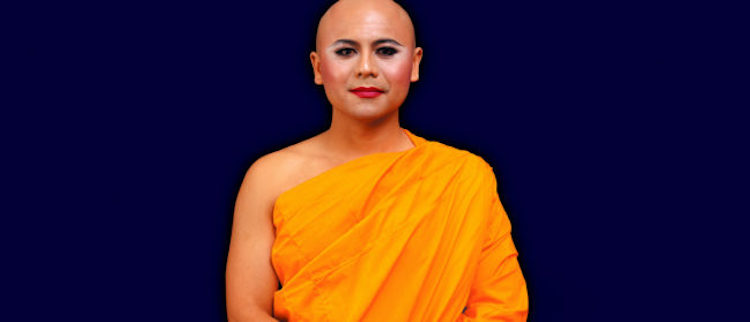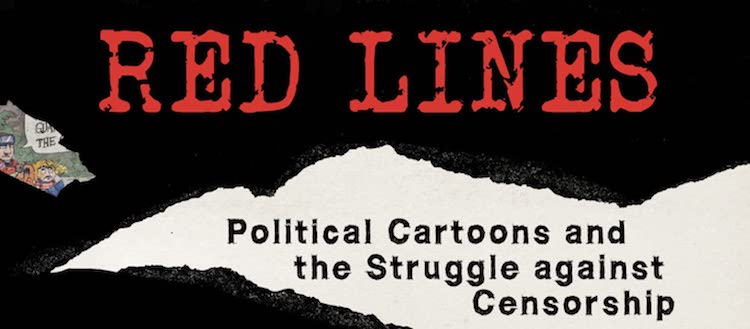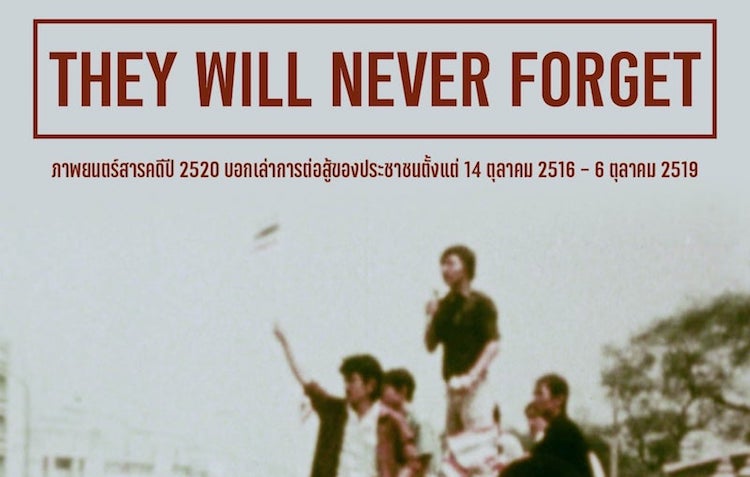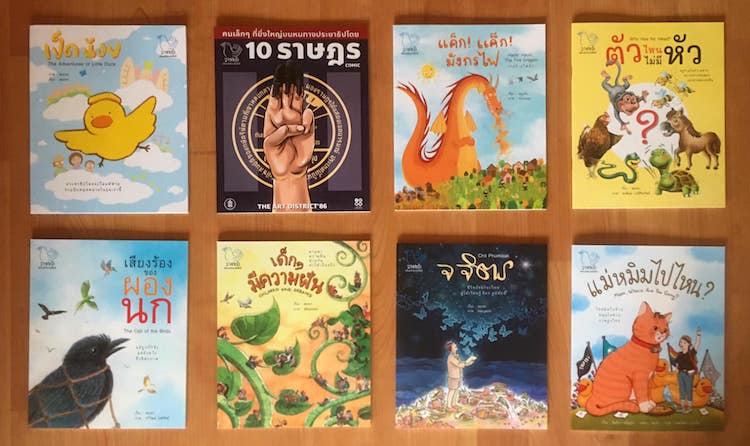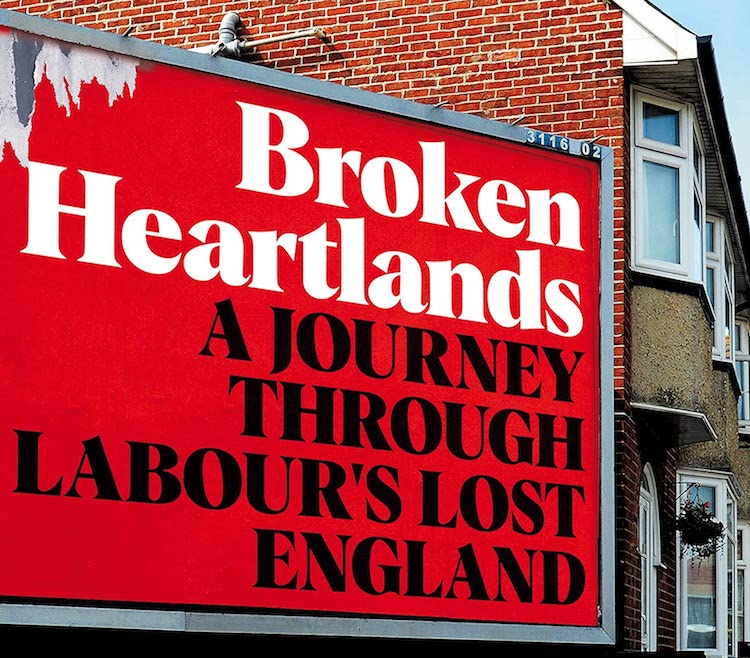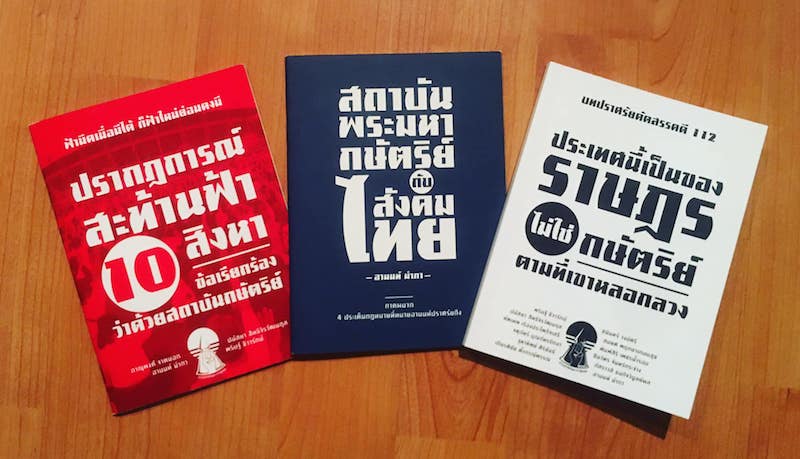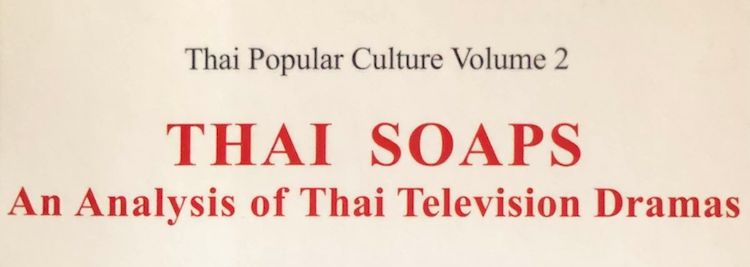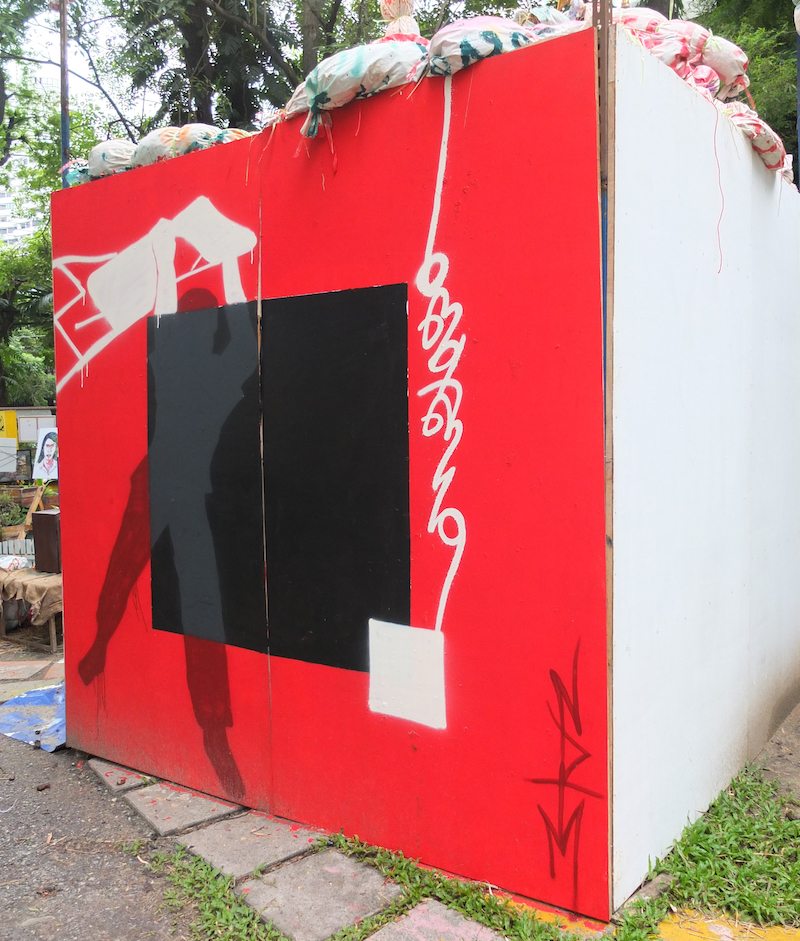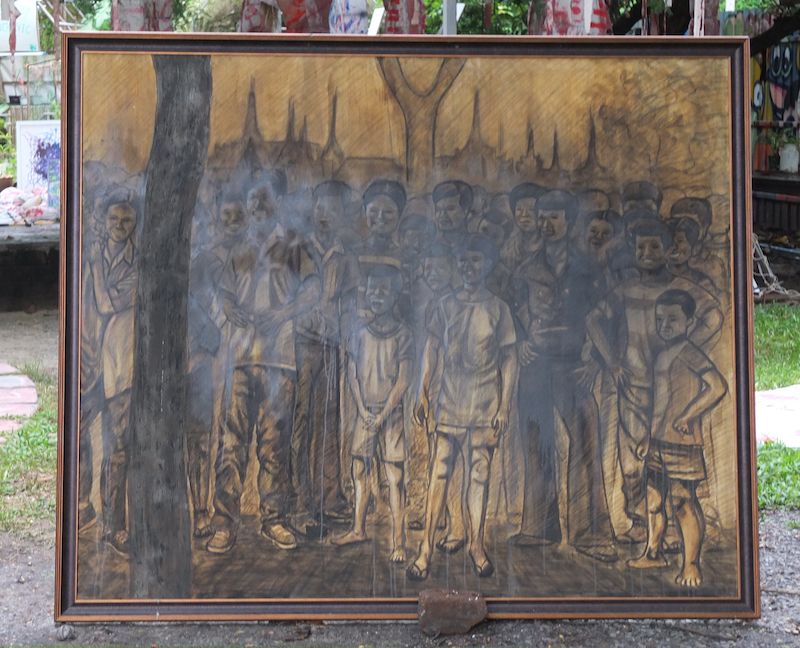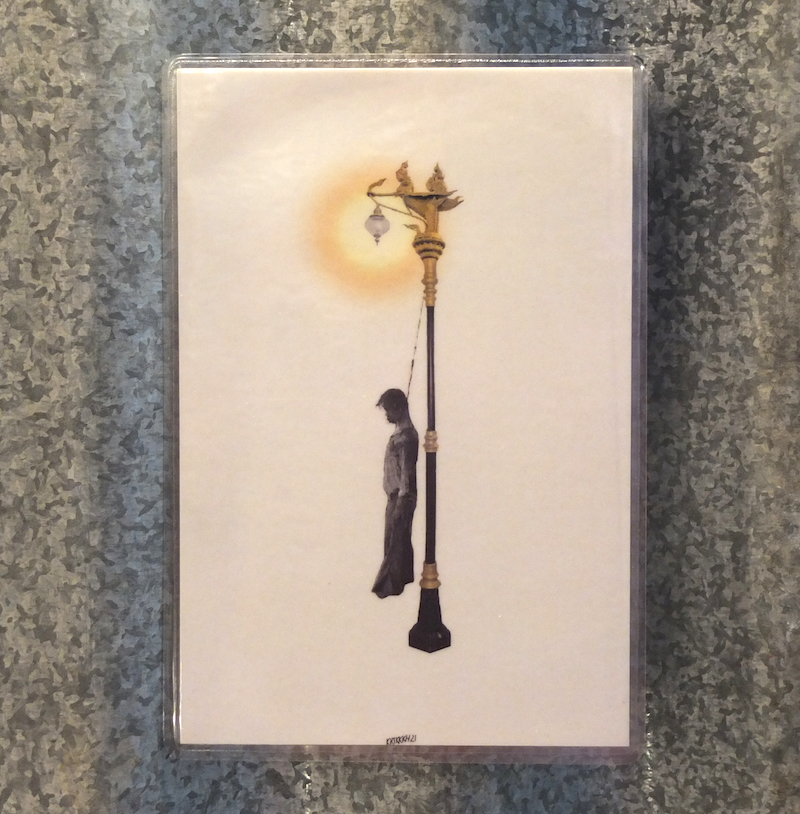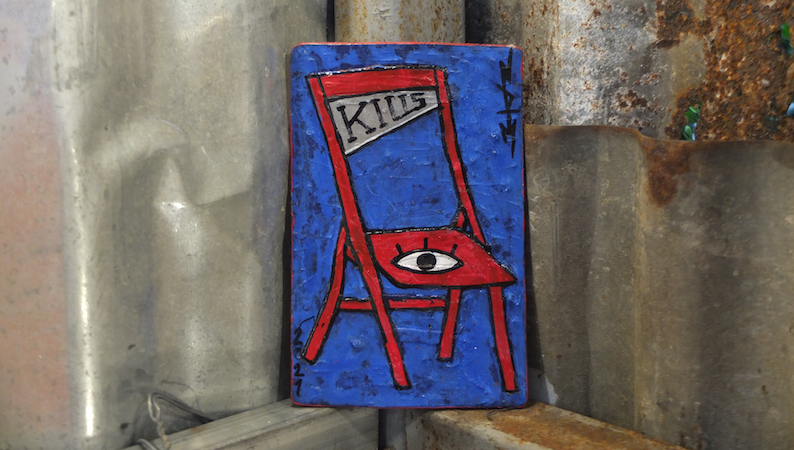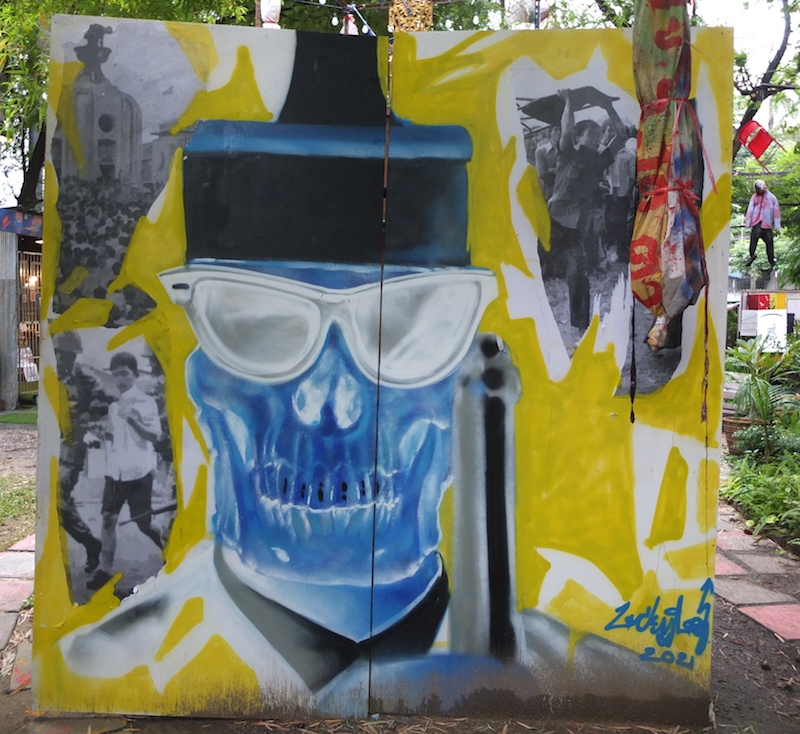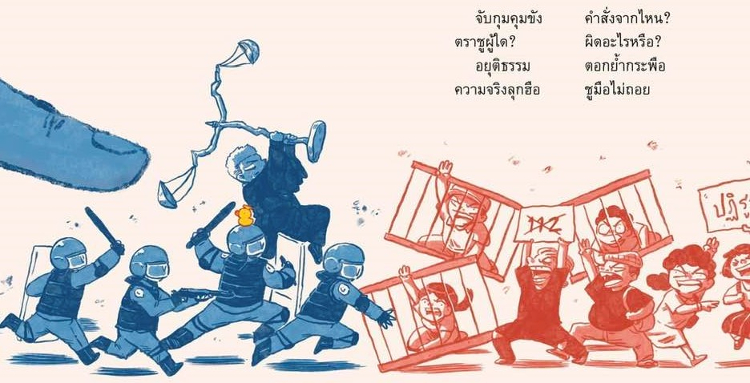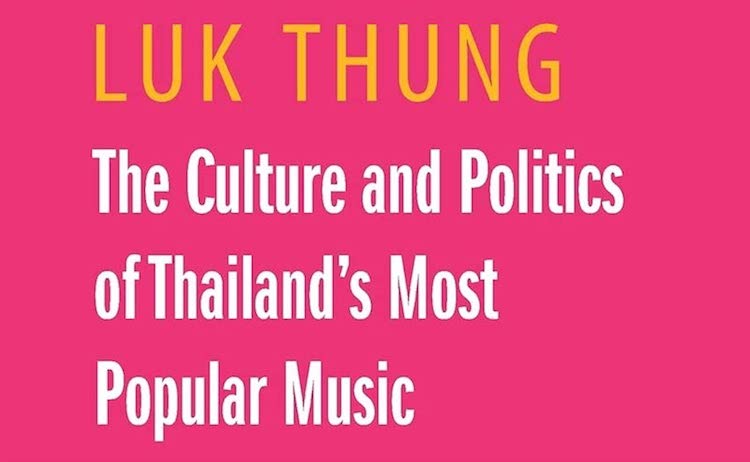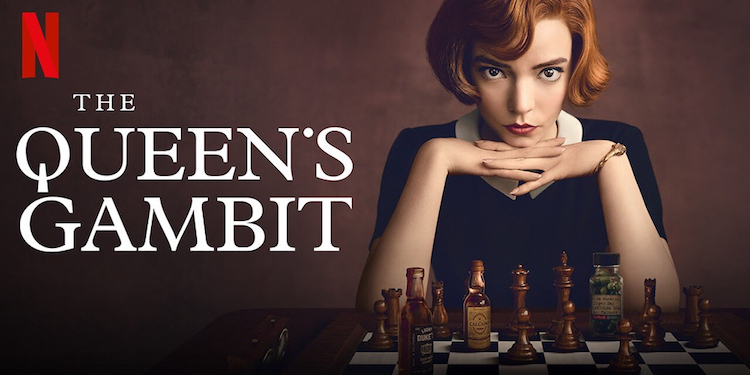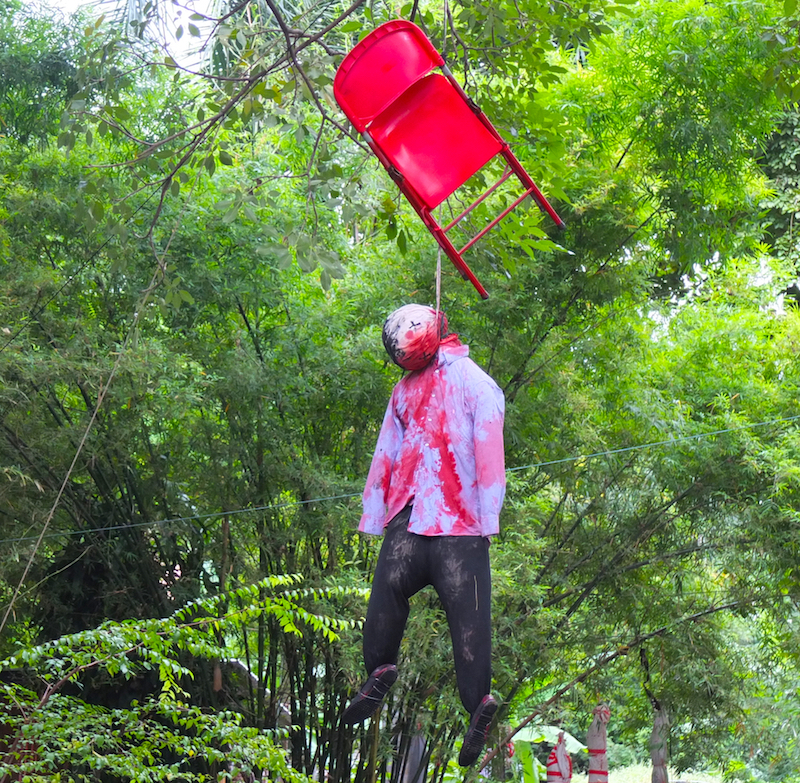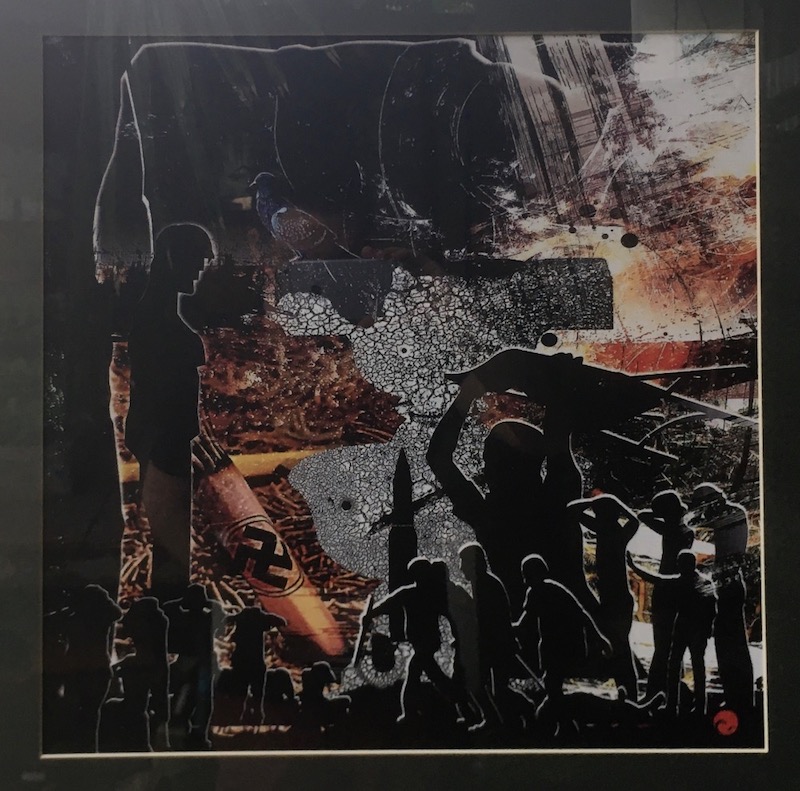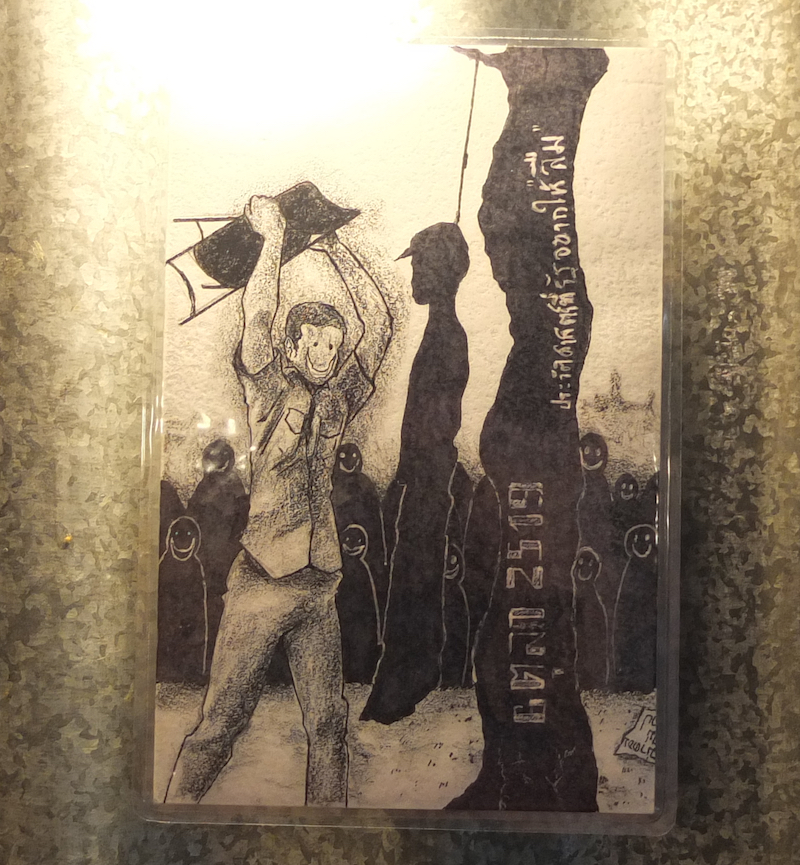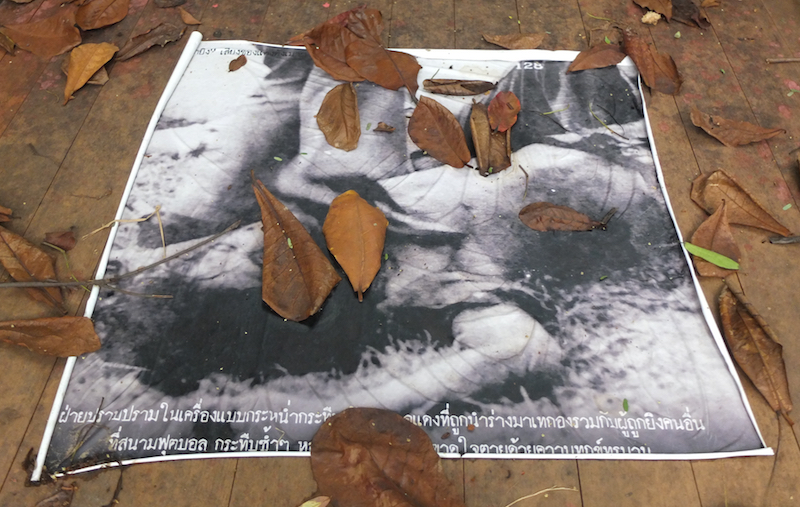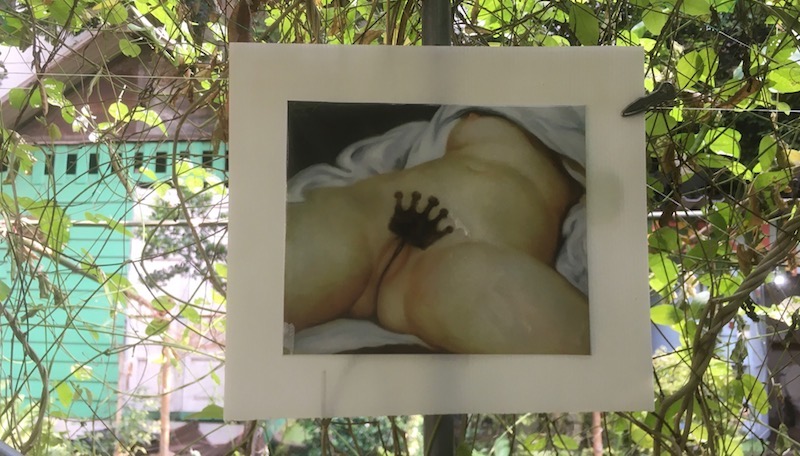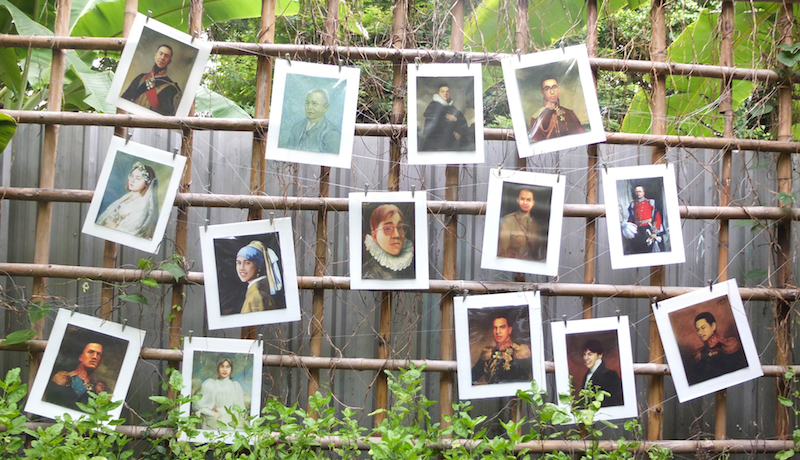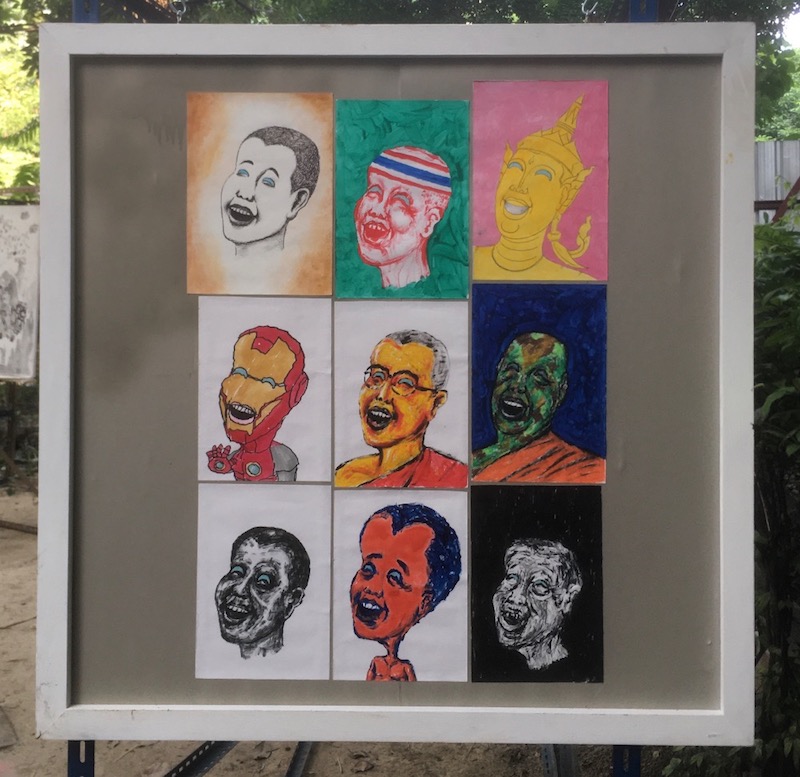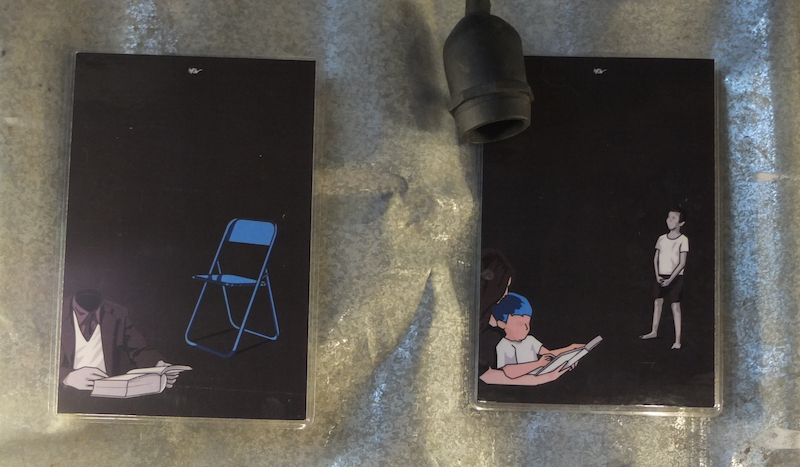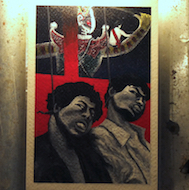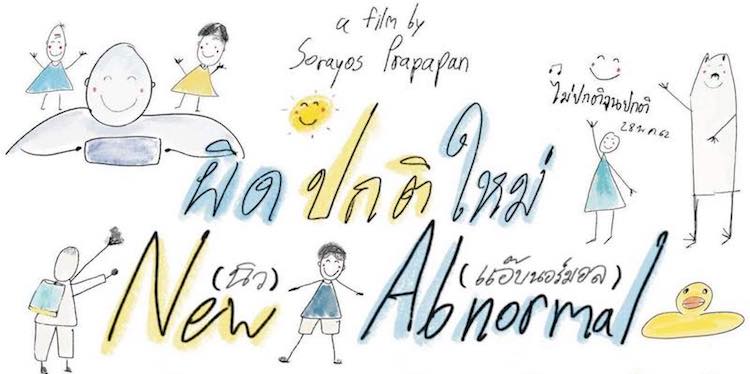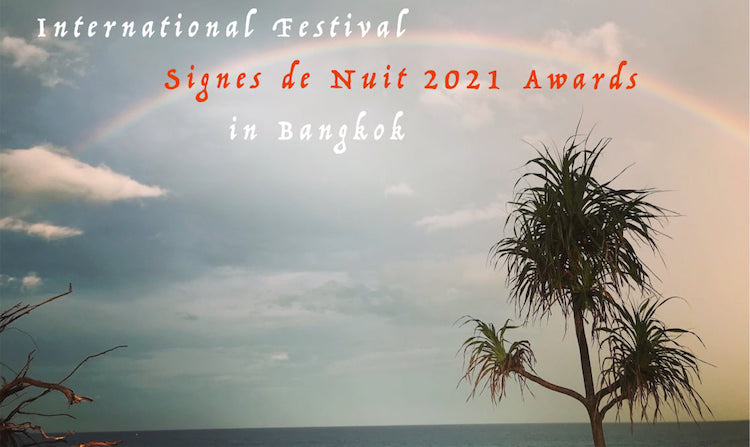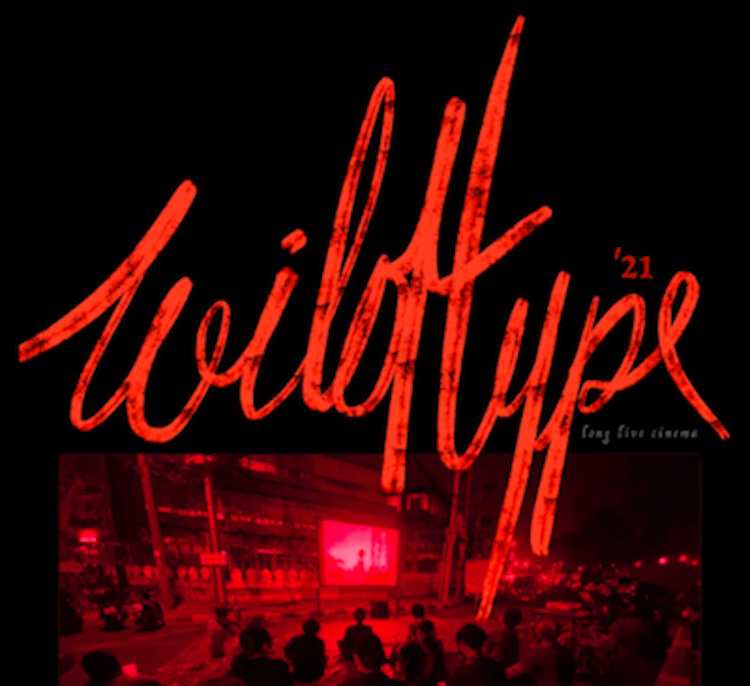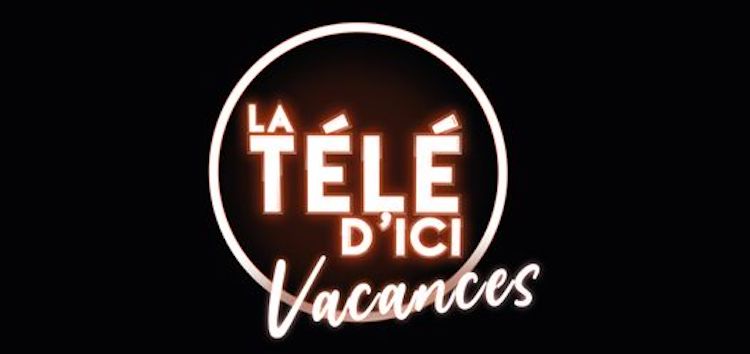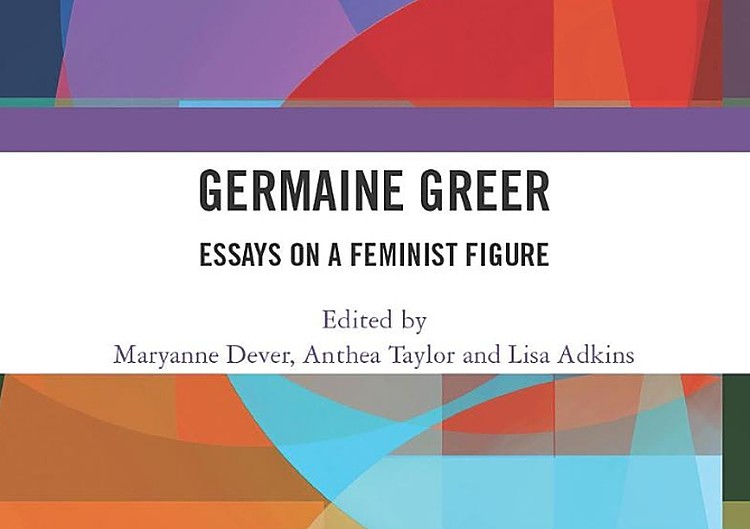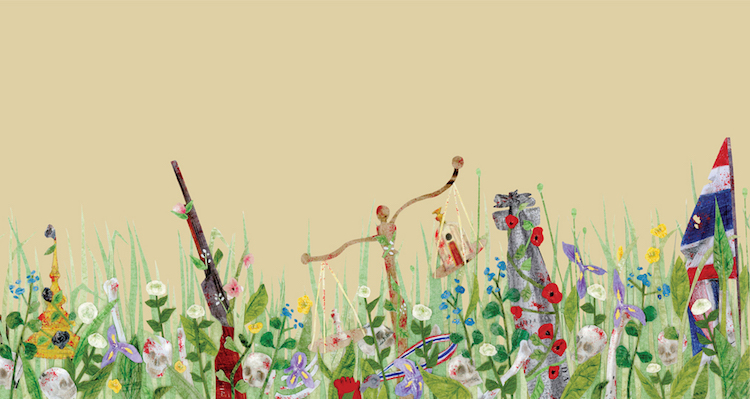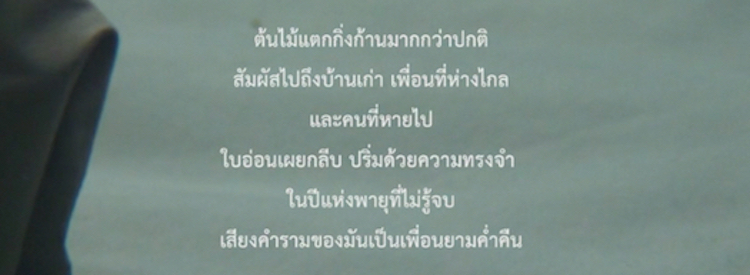
Apichatpong Weerasethakul’s latest feature film, Memoria, won the Jury Prize after its world premiere at this year’s Cannes Film Festival. The film received a standing ovation, after which Apichatpong memorably declared: “Long live cinema!” With coronavirus vaccines in short supply and the registration system in disarray, he also used his Cannes acceptance speech as an opportunity to call on the Thai government to “please wake up, and work for your people, now.”
A promotional clip from Memoria attracted attention in Thailand for its political meaning: Tilda Swinton’s character performs a magic trick with a red, white, and blue handkerchief, making the blue colour disappear. Blue has a symbolic meaning on the Thai flag, and in an online interview with the Foreign Correspondents’ Club of Thailand, Apichatpong confirmed: “I chose the colours.” Last week, the film’s distributors announced that it would never be available on any video format, and instead would remain an exclusively theatrical presentation.
Apichatpong’s short film Night Colonies also premiered at Cannes, as part of the anthology film The Year of the Everlasting Storm. Night Colonies combines two of the director’s consistent themes, light and the natural world, as it features insects buzzing around neon lights. The film begins with a poem paying tribute to “distant friends, and those who had disappeared”, a reference to pro-democracy campaigners self-exiled or abducted following lèse-majesté charges.
The poem continues: “The young leaves unfold, flushed with memories in the year of the everlasting storm.” In addition to giving the portmanteau film its title, these lines are also a metaphor for the student protesters campaigning for reform of the monarchy. In fact, the film’s soundtrack includes audio recorded at protests in Bangkok on 27th July and 20th August 2020.
Apichatpong’s exhibition A Minor History (ประวัติศาสตร์กระจ้อยร่อย)—now on show at 100 Tonson in Bangkok—also addresses the murder of lèse-majesté suspects, and the title of his short film October Rumbles (เสียงฟ้าเดือนตุลา) hints at the rumblings of dissent from the student protesters. He co-directed the video installation Silence—shown at 100 Tonson last week—which refers directly to the tragic “memories” mentioned in the Night Colonies poem.
A promotional clip from Memoria attracted attention in Thailand for its political meaning: Tilda Swinton’s character performs a magic trick with a red, white, and blue handkerchief, making the blue colour disappear. Blue has a symbolic meaning on the Thai flag, and in an online interview with the Foreign Correspondents’ Club of Thailand, Apichatpong confirmed: “I chose the colours.” Last week, the film’s distributors announced that it would never be available on any video format, and instead would remain an exclusively theatrical presentation.
Apichatpong’s short film Night Colonies also premiered at Cannes, as part of the anthology film The Year of the Everlasting Storm. Night Colonies combines two of the director’s consistent themes, light and the natural world, as it features insects buzzing around neon lights. The film begins with a poem paying tribute to “distant friends, and those who had disappeared”, a reference to pro-democracy campaigners self-exiled or abducted following lèse-majesté charges.
The poem continues: “The young leaves unfold, flushed with memories in the year of the everlasting storm.” In addition to giving the portmanteau film its title, these lines are also a metaphor for the student protesters campaigning for reform of the monarchy. In fact, the film’s soundtrack includes audio recorded at protests in Bangkok on 27th July and 20th August 2020.
Apichatpong’s exhibition A Minor History (ประวัติศาสตร์กระจ้อยร่อย)—now on show at 100 Tonson in Bangkok—also addresses the murder of lèse-majesté suspects, and the title of his short film October Rumbles (เสียงฟ้าเดือนตุลา) hints at the rumblings of dissent from the student protesters. He co-directed the video installation Silence—shown at 100 Tonson last week—which refers directly to the tragic “memories” mentioned in the Night Colonies poem.

